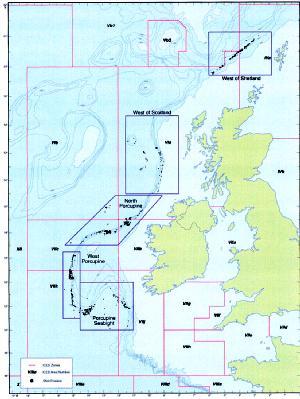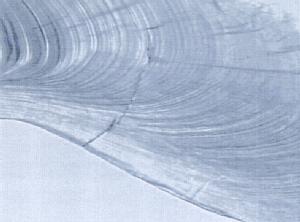| 2002 |

|
YEAR BOOK |
BORD IASCAIGH MHARA � THE IRISH SEA FISHERIES BOARD
|
The scientific collection of
deepwater fisheries data in 2001
Irish Sea Fisheries
|


The specific objectives of the programme were: to collect data on fishing activity, catches and discards, throughout the course of fishing operations, in accordance with best international practices and techniques; to increase the amount of biological data available on deepwater species and to provide this data in an internationally acceptable format to the International Council for the Exploration of the Sea (ICES). The emphasis of the approach to the fishery reflected the need for scientific awareness and objectivity regarding the future management of deepwater stocks. The principles of the UN agreement on highly migratory fish stocks and straddling fish stocks, and the Food and Agriculture Organisation�s Code of conduct for responsible fisheries, were of particular significance in this regard and formed the basis upon which the rationale for the formulation and implementation of the deepwater observer programme was structured. In addition, the implementation of a system of data collection, in conjunction with the increase of fishing effort on deepwater species, was in accordance with the advice from ICES that fishing should not be allowed to expand faster than the acquisition of information necessary to provide a basis for sustainable exploitation.
In consequence, all newly commissioned vessels entering the deepwater fishery were required to carry both scientific and technical observers on all of their trips. The resulting programme of observation formed the most comprehensive scheme of this type conducted on Irish vessels, specifically targeting deepwater species. It also made use of the best available technology, using laptop computers at sea to enter data on catches and to transmit this information ashore via satellite or mobile phone, as required. Observers were also in daily contact with their co-ordinators at BIM using satellite communication, allowing real time monitoring of the catch and effort of boats operating in this fishery.
The scientific methods used by observers to collect information on the catches and discards of deepwater boats received detailed attention from the outset, to ensure that data of the highest quality possible would be available to ICES. Data collection protocols were designed using methods of best practice, in association with the international experience of BIM�s deepwater observer programme staff in similar programmes in Europe, the Falkland Islands and Alaska, and contact with those in Australia, South Africa and Canada.
This emphasis placed quality and control mechanisms in train at critical points within the data collection procedure and facilitated the provision of detailed catch and biological data to fisheries scientists in BIM and in summary form to the ICES working group on the biology and assessment of Deep-sea fisheries resources and the advisory committee on fisheries management (ACFM).
During the course of the deepwater trials 80.7% of the fishing days of eight boats fishing deepwater species in 2001 were observed by BIM personnel. Scientific observers measured a total of 43,019 fish at sea and 2,276 fish ashore and collected detailed biological information on 651 hauls in the course of 312 fishing days.

Sea going, fisheries biologists will continue the collection of biological and catch data during 2002 as part of a programme funded under the National Development Plan, with the assistance of the EU. The resulting data and subsequent analysis of deepwater fishing activity will provide a valuable resource for fisheries scientists and will reflect the responsible attitude to the fishery being demonstrated by national agencies and stakeholders alike.
Contact: Dr Ian Lawler or Dominic Rihan,
Bord Iascaigh Mhara, PO Box 12, Crofton Road,
Dun Laoghaire, Co. Dublin;
Tel: 01-2144100; Fax: 01-2300564;
E-mail: [email protected]